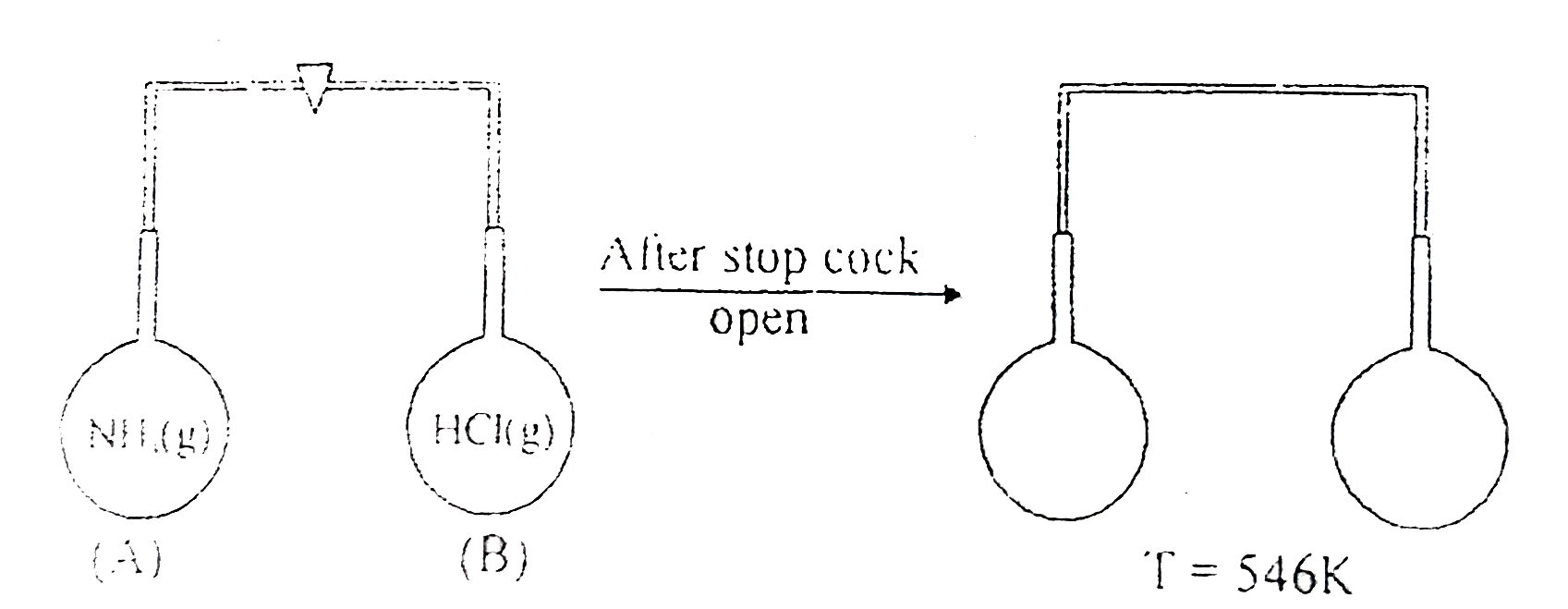For the process
NH3(g)+HCI(g)→NH4CI(s)
ΔH=+ve,ΔS=+ve
ΔH=−ve,ΔS=+ve
ΔH=+ve,ΔU=−ve
ΔH=−ve,ΔS=−ve
The correct Answer is:D
Step by step video, text & image solution for For the process NH_(3)(g) +HCI(g) rarr NH_(4)CI(s) by Chemistry experts to help you in doubts & scoring excellent marks in Class 12 exams.
Topper's Solved these Questions
- BOOK - OP TANDONCHAPTER - Chemical Thermodynamics and ThermochemistryEXERCISE - Objective Question Level B Set II8videos
Chemical Thermodynamics and Thermochemistry
- BOOK - OP TANDONCHAPTER - Chemical Thermodynamics and ThermochemistryEXERCISE - Assertion Reason Type Question29videos
Chemical Thermodynamics and Thermochemistry
- BOOK - OP TANDONCHAPTER - Chemical Thermodynamics and ThermochemistryEXERCISE - Set 218videos
Chemical Thermodynamics and Thermochemistry
- BOOK - OP TANDONCHAPTER - CHEMICAL KINETICSEXERCISE - LINKED COMPRESHENSION TYPE QUESTIONS ( SECTION-VI)4videos
CHEMICAL KINETICS
- BOOK - OP TANDONCHAPTER - CLASSIFICATION AND NOMENCLATURE OF ORGANIC COMPOUNDS EXERCISE - INTEGER2videos
CLASSIFICATION AND NOMENCLATURE OF ORGANIC COMPOUNDS
Similar Questions
Knowledge Check
- Question 1 - Select One
Find the heat change in the reaction : NH3(g)+HCl(g)→NH4Cl(s) from the following data
NH3(g)+aq→NH3(aq),ΔH=−8.4K. Cal.HCl(g)+aq→HCl(aq),ΔH=−17.3K. Cal.NH3(aq)+HCl(aq)→NH4Cl(aq),ΔH=−12.5K. Cals.NH4Cl(s)+aq→NH4Cl(aq),ΔH=+3.9K.Cal.A−42.1B−34.3C+34.3D+42.1 - Question 2 - Select One
An experiment is done as shown in diagram then final pressure after stop cock is opened.
[Assume reaction : NH3(g)+HCl(g)→NH4Cl(s) ]
 A3 atmB13 atmC1 atmD1.5 atm
A3 atmB13 atmC1 atmD1.5 atm - Question 3 - Select One
A 5.00L evacuated cylinder is charged with 25.5g of NH3 and 36.4 g of HCl. Calculate the final pressure at 85.0∘C after the two compounds have reacted completely:
NH3(g)+HCl(g)→NH4CI(s)A2.94 atmB5.88atmC8.82atmD14.7atm
NH3 gas can be prepared by Haber’s process as, N2(g)+3H2(g)→2NH3(g). At a particular moment concentration of all the species is 2 moles, calculate the concentration of N2 and H2 taken initially
View SolutionPredict the sign of ΔS (positive or negative) for the following changes :
(i) HCOOH(l)→H2O(l)+CO2(g)
(ii) NH3(g)+HCI(g)→NH4CI(s)
(iii)I2(s)→I2(g)
(iv) 2O3(g)→3O2(g)
(v) 2H2(g)+O2(g)→2H2O(l).View SolutionCalculate the magnitude of standard free energy of formation of ammonium chloride at 25∘C (approximate integer in Kcalmol−1), the equation showing the formation of NH4CI from its elements is
12NH4(g)+2H2(g)+12CI2(g)→NH4CI(s)
For NH4CI,ΔH∘f is −313KJmol01, Also given that
S∘N2=191.5JK−1mol−1 S∘N2=130.6JK−1mol−1
S∘CI2=223.0JK−1mol−1 S∘NH4CI=94.6JK−1mol−1View SolutionFor the reaction : 2NH3(g)→N2(g)+3H2(g). What is the % of NH3 converted if the mixture diffuses twice as fast as that SO2 under similar conditions.
View SolutionPredict which of the following reactions have positive entropy changes.
(a) NH3(g)+HCl(g)→NH4Cl(s)
(b) Cu+2(aq)+S−2(aq)→CuS(s)
(c) NH2COONH4(s)→2NH3(g)+CO2(g)
(d) Condensation of waterView Solution

